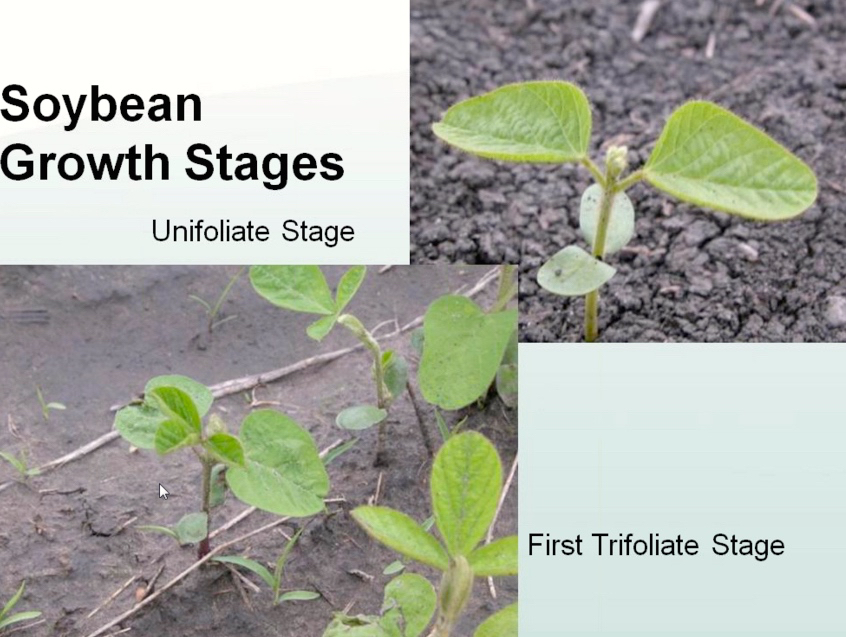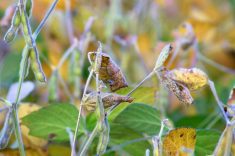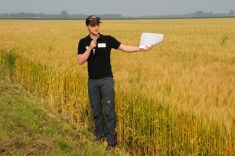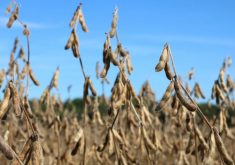Right now — the middle of May — is considered the ideal time for seeding soybeans.
Usually the soil is warm enough to quickly germinate soybeans and the risk of frost, while still a possibility, is reduced. But this year planting is probably a bit ahead of schedule in south-central Manitoba and it’s about to ramp up, if the rains hold off, in western parts of the province.
As of May 8, Manitoba Agriculture pulse crop specialist Dennis Lange estimated 10 to 30 per cent of the central region’s soybeans had been seeded.
Read Also
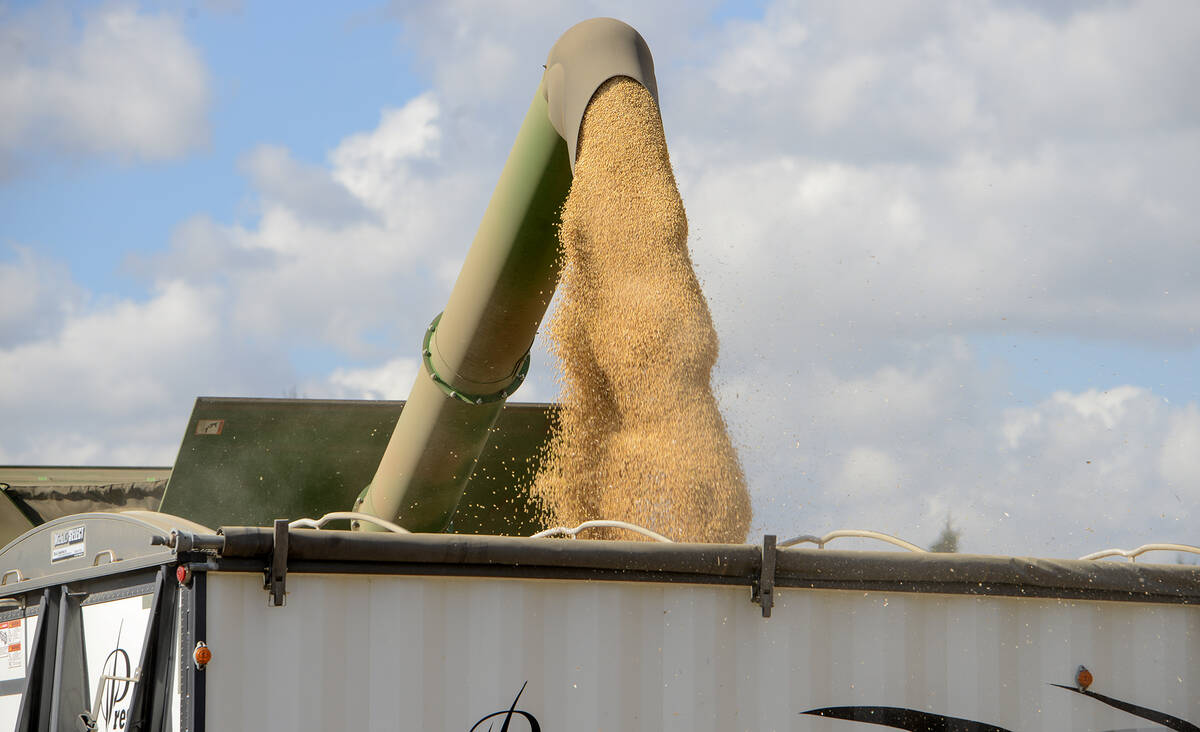
Grain markets hungry for U.S. data
The U.S. government shutdown meant that futures markets were left without robust grain supply information
“The big thing this year has been conditions in some areas have been good for seeding and with large equipment farmers can move very quickly from one crop to the next crop,” Lange said in an interview May 10.
“Nowadays with the big equipment you pop in your wheat and the weather is good and you just keep going. That’s why in some areas I’ve heard, such as Lowe Farm, some growers have finished up (planting soybeans) already.”
It makes sense with the favourable weather many parts of the province have enjoyed. Weather statistics collected by Manitoba Agriculture shows most areas have received below normal precipitation and above normal growing degree days.
Western farmers might envy the seeding progress to the east, but there’s still lots of time for Westman growers to plant soybeans, Amir Farooq, Manitoba Agriculture’s pulse crop specialist based in Hamiota said during the Westman CropTalk webinar May 10.
Crop insurance data (see chart below) show from 2010 to 2014 most of Manitoba’s soybeans were seeded in the third and fourth weeks of May when, on average, the yield potential is still close to 100 per cent, Farooq said.
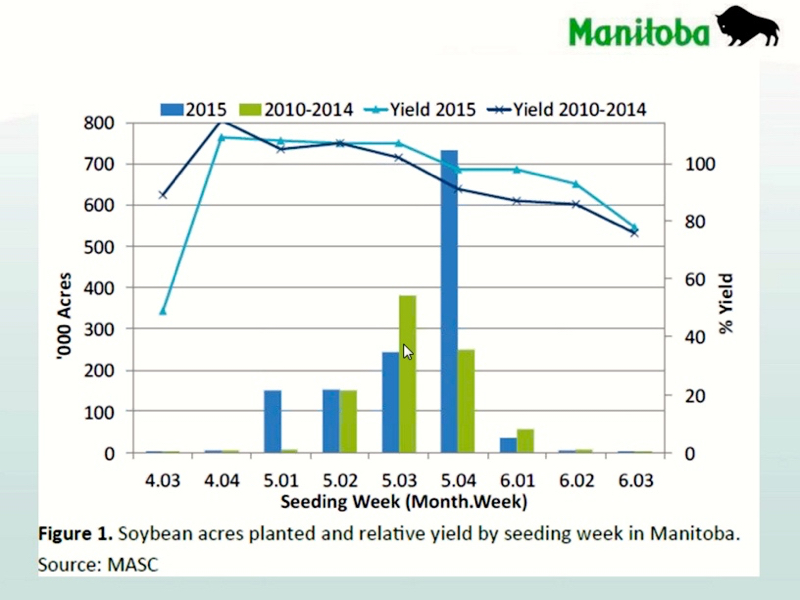
“We still have a lot of time so don’t be panicked,” he said. “I think we should check… seed moisture and soil temperature whenever we are seeding. I think the next two weeks we have time to grow soybeans with a good yield potential.”
Farooq said soybean seed moisture should be 12 to 13 per cent. Seed drier than 10 per cent moisture could be damaged during the seed treating process.
One of the most important considerations when seeding soybeans is getting the correct plant population, Farooq said. It varies with the variety, but ranges from 180,000 to 200,00 plants an acre, he said.
The Manitoba Pulse and Soybean Growers Association’s bean app includes a plant population calculator. The app is available from iTunes and Google Play.
While it’s still possible to get a good yield with 100,000 plants an acre, there are likely going to be weed challenges stemming from a less competitive crop.
A simple way to check plant population is to do random counts within a hula hoop and multiply by 20,000. If there are 20 plants in the hula hoop, that’s equivalent to 200,000 an acre.
Farooq also offered this advice:
- Avoid seeding soybeans if the forecast calls for cool weather (If newly seeded soybeans take in cold water that can result in a stressed seedling or even prevent germination).
- Seed soybeans into soil that’s at least eight to 10 C to promote quick germination.
- Double inoculate when seeding into fields new to soybeans to promote good nodulation. The nodules produce nitrogen and a shortage can reduce yields.
- To ease harvest, roll soybean fields when they are in the first trifoliate. Don’t roll during the hook stage, just as soybeans emerge when the crop is more susceptible to breaking. It’s also best to roll during a warm afternoon to reduce damage. Scout the field first to ensure it’s at the right stage to roll. To avoid compaction don’t roll wet fields
- Seed to moisture, but don’t go too shallow or deep. Three-quarters to one inch deep is ideal.
- Soybean seedlings can tolerate more frost than plants in the V1 or V2 stage. Seedlings can take -1.1 to -1.7 C for a short time and even -2.2 if hardened by previously cool temperatures. But plants in the V1 to V2 stage can be damaged at 0 C.
- Following a spring frost be patient. Sometimes the soybeans will grow back. Even a plant population of 120,000 per acre is better than re-seeding.
With soybeans susceptible to late spring and early fall frosts there’s always a risk of planting too soon or late. Farmers have to make the decision taking into account the date, soil temperature, 24 hour forecast and their tolerance for risk, Farooq said.
If farmers have a lot of soybeans to plant, they have to start sooner, Lange said.
Weather is a big factor. It’s difficult to predict more than a few days out. If a farmer can seed now, but the soil is cool, should he wait? If he does warmer soils could result in faster germination and a more robust crop. But if it rains for two weeks, the planting window may be closed.
“I think on the western side (of the province) a lot of producers are just going to get going at it here in the next little well,” Lionel Kaskiw, Manitoba Agriculture’s Souris-based Farm Production Extension Specialist told the webinar.
He also noted the forecast calls for rain in western Manitoba in the next few days.


